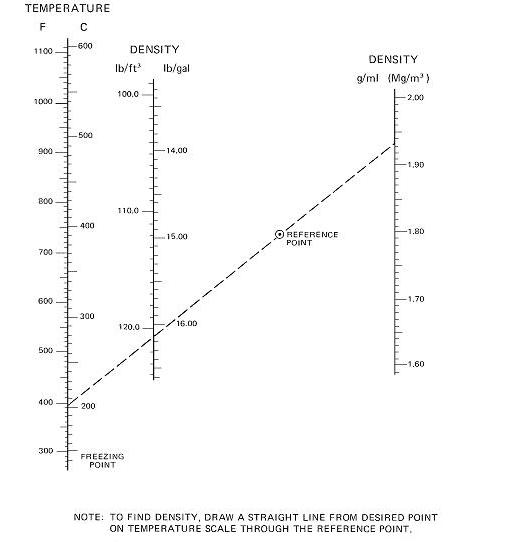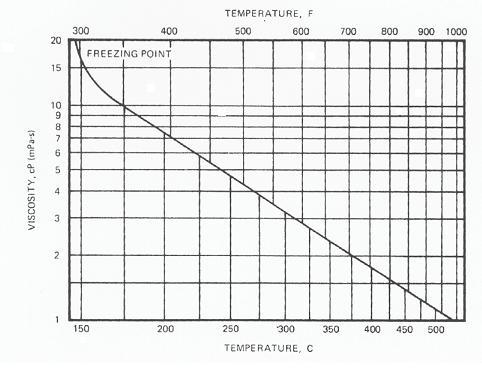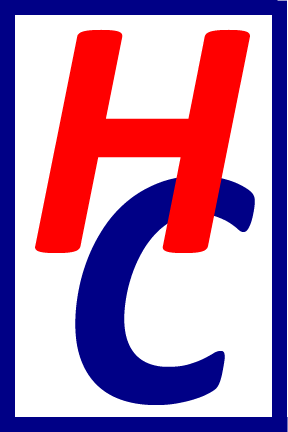|
U-TEC-TIC is a heat transfer media primarily used in heating and cooling systems operated
Between 150° - 540°C (300° - 1000°F). Operations such as rubber curing,
rotational molding, pre-heating of reactant materials, high temperature distillation are some
examples of U-TEC-TIC's potential.
Recent advances in solar heating technology and the chemical and petrolium processes
which require an economical transfer media between steam and direct-fired open other
vistas of applications.
U-TEC-TIC operates at atmospheric pressure which eliminates the need for costly high pressure
equipment. It is non-explosive, non-flammable and non-fouling when used under recommended
conditions. Expensive maintenance and power costs are minimized in systems using U-TEC-TIC.
It behaves as a normal fluid and the standard correlation may be used in the design of
heat-exchange equipment.
COMPOSITION and CHARACTERISTICS
U-TEC-TIC is a water soluble eutectic mixture of inorganic salts:
- Potassium Nitrate 53%
- Sodium Nitrite 40%
- Sodium Nitrate 7%
Thermal Stability: Excellent
Transfer Co-efficient: Excellent
Liquification Point and stability: U-TEC-TIC easily melts using direct steam or via coils
or steam jacketed equipment with pressures as low as 60 psig. It becomes straw-colored at
approximately 142°C (288°F). Moisture sharply reduces liquification temperatures;
however, this can be overcome by heating the liquefied salt to about 250°C (480°F).
At this point, effervescence or frothing may occur and proper precaution should be taken
to protect personnel from spattering by the molten salt.
U-TEC-TIC will give many years of service when used within its prescribed operating range
of 142° to 450°C (288° to 850°F).
Good practice requires avoiding contaminants from getting into the melt. U-TEC-TIC when
utilized as indicated, is very stable. Slow thermal decomposition, as shown below, occurs
in the range of 450° to 540° C (850° -1000°F) when used in a closed system.
5NaNO2 (@ 450° - 540°C) → NaNO3 + N2
The liquification point gradually rises with the slow evolution of nitrogen. Rapid
decomposition occurs above 815°C (1500°F) causing the melt to boil.
Since the decomposition reaction is endothermic, the decomposition ceases with removal of the
heat source. Utilization of U-TEC-TIC in an open system, 450° - 540°C
(850° - 1000°F) caused the nitrite to oxidize slowly to nitrate:
2NaNO2 + O2 @ (450° - 540°C) → 2NaNO3
The elimination of other side reactions, which cause the raising of the liquification
ion point, can be accomplished by blanketing the melt with nitrogen. The two principal
side reactions being:
- Absorption of carbon dioxide to give insoluble carbonates.
- Absorption of moisture forming alkali metal hydroxides.
DENSITY of LIQUID U-TEC-TIC:
Density can be read through use of the nomograph below

TOTAL HEAT of U-TEC-TIC:
Solid U-TEC-TIC has a coefficient of linear thermal expansion1:
- 2.85 x 10-5/°F
- 5.13 x 10-5/°C
From the total heat of U-TEC-TIC(graph below), it is seen that the specific heat of U-TEC-TIC
solid is 0.32 cal/g.°C, and that of U-TEC-TIC liquid is 0.37. The latent heat of fusion is
approximately 20 cal/g. (35 BTU/lb.)

VISCOSITY LIQUID U-TEC-TIC
The approximate viscosity of liquid U-TEC-TIC can be easily obtained from the graph below:

ELECTRICAL RESISTIVITY:
The electrical resistivity of liquid U-TEC-TIC is 1.7 Ω • cm. This figure is midway between
that of water and mercury (25 x 106 Ω • cm. 96 x 10-6 Ω • cm respectively)
EFFICIENCY:
U-TEC-TIC is a highly efficient heat transfer salt when compared to hot air at 3 atmosphere
pressure. . . ca 860:30 respectively.
MATERIAL OF CONSTRUCTION:
Cast iron materials of construction are not recommended with use of U-TEC-TIC heat transfer
salt. Plain carbon steel has been found satisfactory as material of construction. For
temperatures above 455 °C (850 °F) more resistant alloys are recommended. At moderate
temperatures, copper materials of construction, has been found satisfactory - ca 300°C
(600°F). For temperatures of approximately 540°C (1000°F) stainless steel
equipment appears to give suitable results. No visible corrosion resulted from the use of
heat transfer salt on seamless stainless steel tubing for a period of about ten months @
500° - 550°C (930° -1020°F).
EQUIPMENT DESIGN:
For severe applications tongue and groove type fittings are desirable while general. Service
finds flat faced flanged fittings satisfactory. Wherever possible welded piping and associated
fittings are recommended. Equipment design requires that the molten salt should be able to
gravity drain to reservoir when shut down of unit is required. Valves and salt lines and
associate equipment should be insulated to prevent excessive heat radiation. In some high
temperature applications radiation fins are required to protect the packing glands on valving.
It is recommended to heat trace lines and valves to prevent salt freezing, especially for
intermittent operation. Manually as well as automatic steel gate valves may be utilized in
installation providing drainage of valves can be accomplished. Submerged centrifugal pumps
are usable provided packing gland does not come into contact with molten U-TEC-TIC.
Graphite asbestos lubricants with minimal graphite content are acceptable. Organic lubricants
and excessive pipe dopes are to be avoided. Asbestos sheet gaskets, packing and metallic
asbestos gaskets have proven satisfactory with the heat transfer salt.
Heating of a solidified U-TEC-TIC bath should be done with either electric immersion heaters
or steam coils so that the top of bath remelts first. Remelting of the bath from the bottom
could result in pressure build up and rupture of equipment.
CAUTION:
All liquids at high temperature are hazardous. This is the prime hazard of U-TEC-TIC. Personnel
must be protected from burns in case of equipment failure. U-TEC-TIC can support the combustion
of other materials, therefore, caution is advised. U-TEC-TIC is nonflammable, however, it is a
strong oxidizer and supports combustion with materials that behave as fuels. Care must be
exercised that heat transfer salt units utilizing U-TEC-TIC be kept away from combustible
structures and materials. Frequent washing of salt bath area is desirable. Sand, not sawdust or
combustible materials is to be used for clean up. It is the users responsibility to test and
evaluate the use of any heat transfer media on the users application. As would be expected on
any heated surfaces, flammable liquids are vaporized rapidly and burn readily. There is little
change in the salt media in cases of hydrocarbons passed through the molten media and burned
on its surface. Somewhat greater hazards exists with solid fuels, i.e. Wood, paper, charcoal,
carbon, plastics, active metals as aluminum and magnesium. Magnesium especially, must not come
into contact with U-TEC-TIC. Aluminum parts can be heat treated when appropriate precautions
are taken2. Adequate ventilation should be provided in case any combustible
materials come into contact with the bath. For a fire in the vicinity of a salt bath,
approved dry powder type fire extinguishers and carbon dioxide extinguishers can be used
satisfactorily. Foam, carbon tetrachloride and aqueous type extinguishers are not recommended.
Sprinkler or low velocity fog type are acceptable. A supply of clean dry s and for use in
confining molten salt that may escape is highly recommended. Water that accidentally enters
the system may be removed by cautiously heating salt reservoir until water vapor has been
vented off.
SAFETY AND FIRST AID
HEALTH HAZARDS:
U-TEC-TIC heat transfer media may cause irritation to eyes and skin because of its composition
previously described. The main hazards of U-TEC-TIC pertain to its oxidizing properties and
the fact that it is used in the molten state. The sodium nitrite portion of the salt mixture may
have toxic effects if ingested. The oral LD50 of sodium nitrite for rats has been
reported as 171 mg/kg3.though this figure equates to 11.5 gm / 150# human, we have
to be aware that as little as one gram may be fatal to humans4
CAUTIONS:
Personnel handling U-TEC-TIC should avoid contact with eye, mucosa or ingestion. Food should
be excluded from area where U-TEC-TIC is handled. Appropriate safety equipment such as safety
goggles and rubber or plastic coated gloves should be worn. Personnel should wear
clean uniforms and wash thoroughly after handling U-TEC-TIC. Uniforms impregnated with
U-TEC-TIC can increase skin irritation and also has a flammability hazard. Thorough cleaning
of uniforms before reuse is a must.
Should material (room temperature) come in contact with eyes, immediately flush with plenty
of water for at least 15 minutes. Call a physician! For skin contact flush with plenty of
water. Should U-TEC-TIC be ingested call a physician immediately. Call local poison control
center for up-to-date information.
Liquid U-TEC-TIC presents hazards described above, but in addition it can cause severe burns!
Flameproof clothing should be worn along with face shield and hard hat when working with
U-TEC-TIC that could spatter from a molten bath. In case of mild skin burn from molten salt,
flush with water and immediately call a physician.
HANDLING AND STORAGE:
U-TEC-TIC should be stored in a cool, dry place because it is slightly hygroscopic. As
previously indicated fuels of any kind must not be stored with U-TEC-TIC. Should fire occur
in storage area, copious quantity of water is to be applied to the salt mixture as fast as
possible. Prevent work clothes from becoming impregnated with U-TEC-TIC because of increased
flammability.
Hummel Croton supplies U-TEC-TIC in 400 lbs. (net) non-returnable poly-lined fiber drums.
Containers of U-TEC-TIC come under dot hazardous materials classification
Proper Shipping Name: Potassium Nitrate and Sodium Nitrite Mixtures
Shipping Information: UN# 1487, Class 5.1, PGII, Label Class 5.1, RQ 100(45.5)
- Dilatameter method ASTM-D-696-44
- Research Report No. 2 The National Board Of Fire Underwriters (1946)
"Potential Hazards In Molten Salt Baths For Heat Treatment Of Metals"
- Stanford Research Institute Report # FDABF-GRAS-084 JULY 1972
- Gleason Et Al, Clinical Toxicology of Commercial Products, Williams and Wilkens 1969 Pg. 171
|

